New perk! Get after it with local recommendations just for you. Discover nearby events, routes out your door, and hidden gems when you sign up for the Local Running Drop.
Why you should lift iron for running on dirt
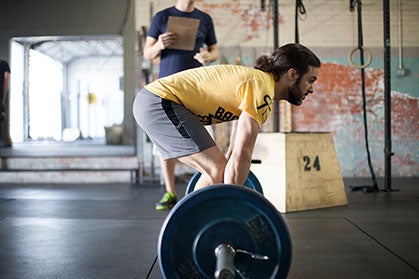
Performing key strengthening exercises, like deadlifts, can make you a stronger, more balanced trail runner. Photo by Flicker user adrian valenzuela / Creative Commons 2.0
Weight training has long been a sort of anathema to runners, eliciting images of bulky guys in gyms and visions of decreased running performance and stressed joints thanks to carrying extra weight. However, nothing could be further from the truth. Properly applied, lifting weights will make you a faster, healthier, more powerful runner.
MYTHS BUSTED
Weight training will destroy my joints. Sure, this can happen if you lift with poor form and without a gradual increase in load and intensity, but that’s no different than rapidly increasing your running mileage when you aren’t conditioned to it. Lifting weights builds muscular strength, which leads to greater stability and a decreased risk of injury.
I’ll get bulky. If you lift for hypertrophy (i.e. eight to 12 reps in a set for each exercise) then, yes, that can happen. However, if you lift for strength with lower reps and fewer sets, then your muscle density and strength will increase without big increases in muscle mass and weight.
I’ll have to run less. There’s no reason to—just be sure to lift on lower-mileage or non-speed-training days to avoid exhausting yourself.
PERFORMANCE FACTORS
With the myths surrounding weight lifting and trail running cleared up, here are the benefits of pumping iron as a runner.
More muscle means more energy. Muscles store glycogen The more lean muscle you have, the more glycogen you have to convert to energy. The more energy you can muster, the farther and faster you can run.
Increased strength improves running form. Have you ever felt your running form start to collapse in the closing stages of a race or a hard training run? This issue is due in part to muscular fatigue. Increased strength leads to improved muscular endurance, meaning your muscles take longer to tire and you can run harder for longer.
You will move faster. Cadence is key when it comes to running speed but so too is “force per foot strike”—the amount of power you can exert to propel yourself forward each time your foot hits the ground—which increases with strength.
HEALTH GAINS
The stronger you are, the less prone you are to injury. Weight training increases bone density, which helps you avoid skeletal injuries. Also, a sustained program of resistance training increases the strength of your connective tissues, which are particularly prone to injury, while making your joints more stable.
You can eat more! Lean muscle requires fuel and the more muscle you have the quicker and more efficient your metabolism becomes. One pound of muscle will burn through five to six calories per day simply while at rest, while one pound of fat will use just one or two.
Weight training slows the aging process. Recent studies have shown that physical strength and muscular health are defining factors in our ability to remain mobile, active and mentally cognizant in older age.
HOW TO DO IT
Keep the reps low and the weight high. Use a weight that you can’t lift more than eight times. Perform three sets of five to eight reps per exercise.
Periodize your training. Slowly increase the weights each week, with a break every fourth week to allow your body to recover, adapt and strengthen.
Don’t overtrain. Never weight train to physical exhaustion, don’t lift when in pain and don’t train every day—three times a week is adequate for most runners.
Use good form. Use proper technique to get the full benefit of the exercise, and decrease the risk of injury.
LIFT UP
These five lifts are all you need to develop a great strength base for the trails.
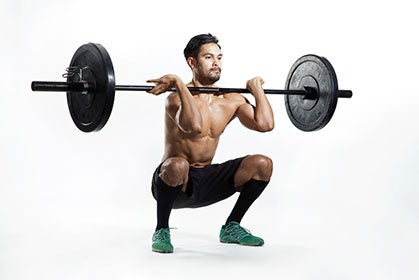
iStockPhoto.com
1. Front Squat
This exercise utilizes your leg muscles, but also builds incredible back and core strength. Keep your back straight, your head up and sit back on your heels to engage your hamstrings and glutes.
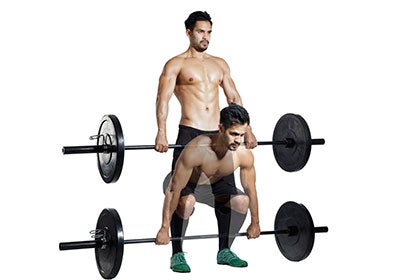
iStockPhoto.com
2. Deadlift
A lift for building strong legs and overall strength. Start with the bar touching your shins and your weight over your heels. Keep your back straight during the lift and pinch your shoulder blades together when standing upright.
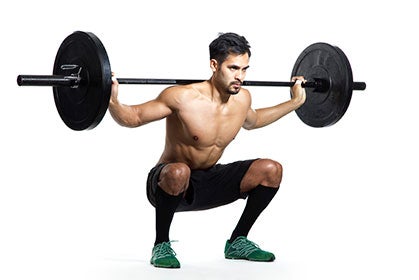
iStockPhoto.com
3. Back Squat
Form is key. You’ll be able to lift more weight than with your front squat. Keep your back straight and your knees behind your toes, and don’t let your torso fold forward.
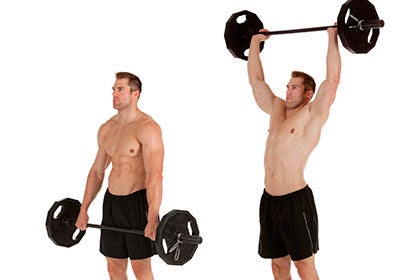
iStockPhoto.com
4. Military Press
Excellent for building strong shoulders and upper-body power. Stand and press the weight from your shoulders until your arms are fully extended, then bring it back down under control.
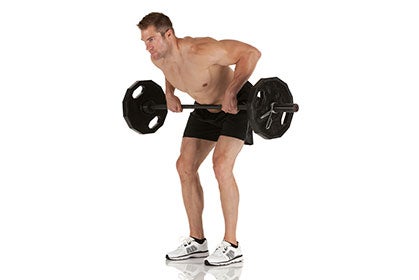
iStockPhoto.com
5. Bent-Over Row
Another upper-body exercise that also strengthens the lower back. Keep your back straight and your weight over your heels. Pull the bar until it reaches your chest and lower until your arms are straight.
Matt Pearce is a “fell-running” ultramarathoner from northern England. A former pro kitesurfer and ex-Royal Marine, he’s now a fitness writer and certified strength and conditioning coach. Matt is focused on helping runners avoid injury and improve their performance by incorporating sports-specific strength work into their training. You can find him on instagram @mattjpearce.